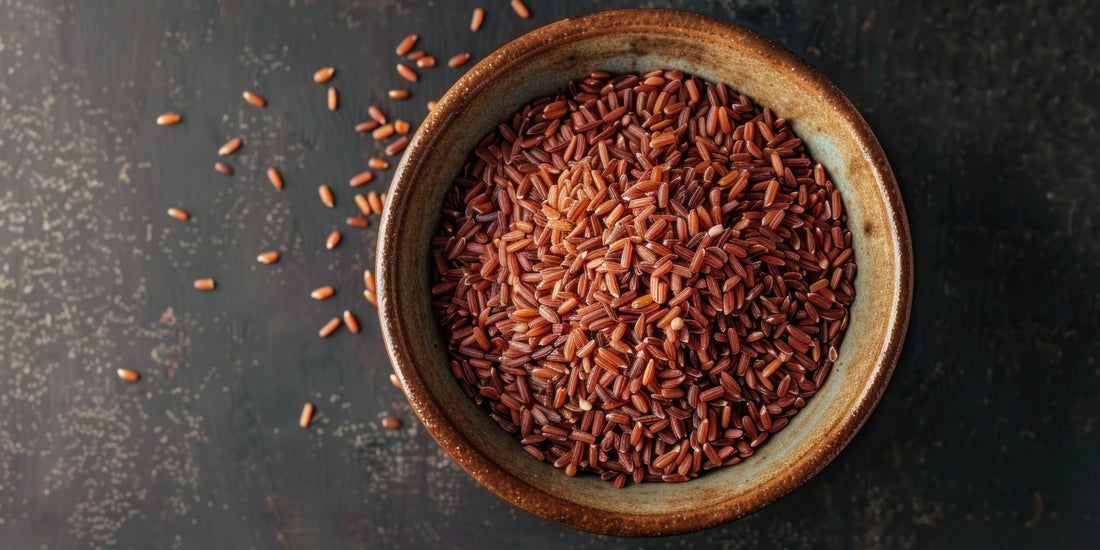Himalayan Red Rice vs. White Rice: Which One is Better for Your Health?
Introduction
Rice is a staple food for millions of people worldwide. But not all rice is the same. While white rice is the most commonly consumed, Himalayan Red Rice is gaining popularity among health-conscious individuals. But which one is better for your health? Let’s compare their nutrition, benefits, and how they impact your overall well-being.
1. Nutritional Comparison: Red Rice vs. White Rice
At first glance, both types of rice may look similar except for the color. But when you dig deeper, Himalayan Red Rice stands out for its rich nutrition.
|
Nutrients |
Himalayan Red Rice |
White Rice |
|
Fiber |
High |
Low |
|
Protein |
More than white rice |
Moderate |
|
Antioxidants |
Rich in anthocyanins |
Very low |
|
Vitamins & Minerals |
High in iron, zinc, magnesium |
Stripped during processing |
|
Glycemic Index (GI) |
Lower (good for blood sugar) |
Higher (may cause sugar spikes) |
Red rice retains its outer bran layer, which makes it more nutritious, while white rice is polished, removing most of its essential nutrients.
2. Why Himalayan Red Rice is a Better Choice
If you want to eat healthily, choosing Himalayan Red Rice over white rice is a smart move. Here’s why:
✅ More Fiber for Better Digestion – Fiber is crucial for a healthy gut, and red rice is packed with it. White rice, on the other hand, has little fiber since the outer layer is removed. More fiber means better digestion, less bloating, and improved gut health.
✅ Helps in Weight Management – Red rice keeps you full for longer, reducing unhealthy cravings. White rice digests quickly, often making you feel hungry sooner. If you’re trying to lose or maintain weight, red rice is the better option.
✅ Rich in Antioxidants – The reddish color of Himalayan Red Rice comes from anthocyanins, powerful antioxidants that help fight free radicals, slow aging, and protect against diseases. White rice lacks these benefits.
✅ Packed with Essential Minerals – Red rice contains iron, zinc, and magnesium, which are essential for energy production, bone health, and immune function. White rice loses most of these minerals during processing.
✅ Good for Blood Sugar Control – If you have diabetes or want to prevent blood sugar spikes, red rice is a better choice. Its low glycemic index ensures a slower release of sugar into the bloodstream. White rice, with a higher glycemic index, can lead to quick sugar spikes and crashes.
3. Health Benefits of Himalayan Red Rice
a) Supports Heart Health
Red rice is naturally rich in anthocyanins and magnesium, both of which help lower bad cholesterol and improve heart health. Regular consumption can help reduce the risk of heart disease, while white rice lacks these benefits.
b) Improves Digestion
With its high fiber content, red rice keeps your digestive system functioning smoothly. It prevents constipation, promotes gut health, and even supports a healthy metabolism. White rice, being low in fiber, does not offer the same digestive benefits.
c) Boosts Immunity
Himalayan Red Rice is a great source of antioxidants, vitamins, and minerals that strengthen the immune system. It helps the body fight infections and keeps you feeling energized. White rice, being stripped of many nutrients, does not contribute as much to immunity.
Conclusion
If you’re looking for a healthier alternative to white rice, Himalayan Red Rice is the way to go. It’s packed with fiber, antioxidants, and essential nutrients that support heart health, digestion, and immunity. While white rice may be softer and more common, it lacks the nutritional benefits that red rice offers.
Making a simple swap from white to red rice can improve your overall well-being. So, next time you cook rice, why not choose the healthier option? Your body will thank you!












